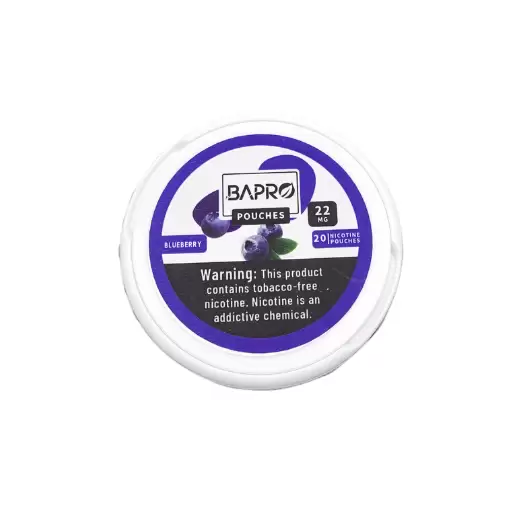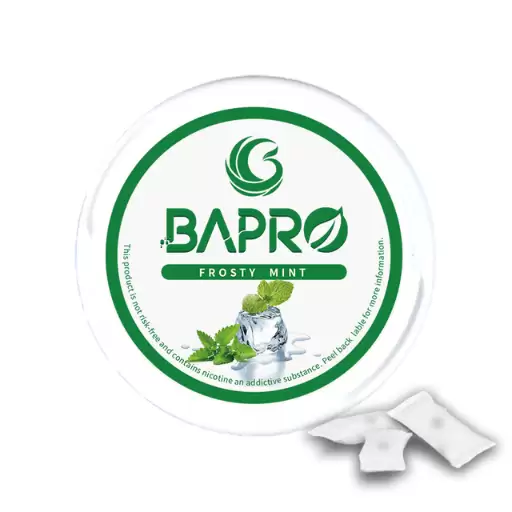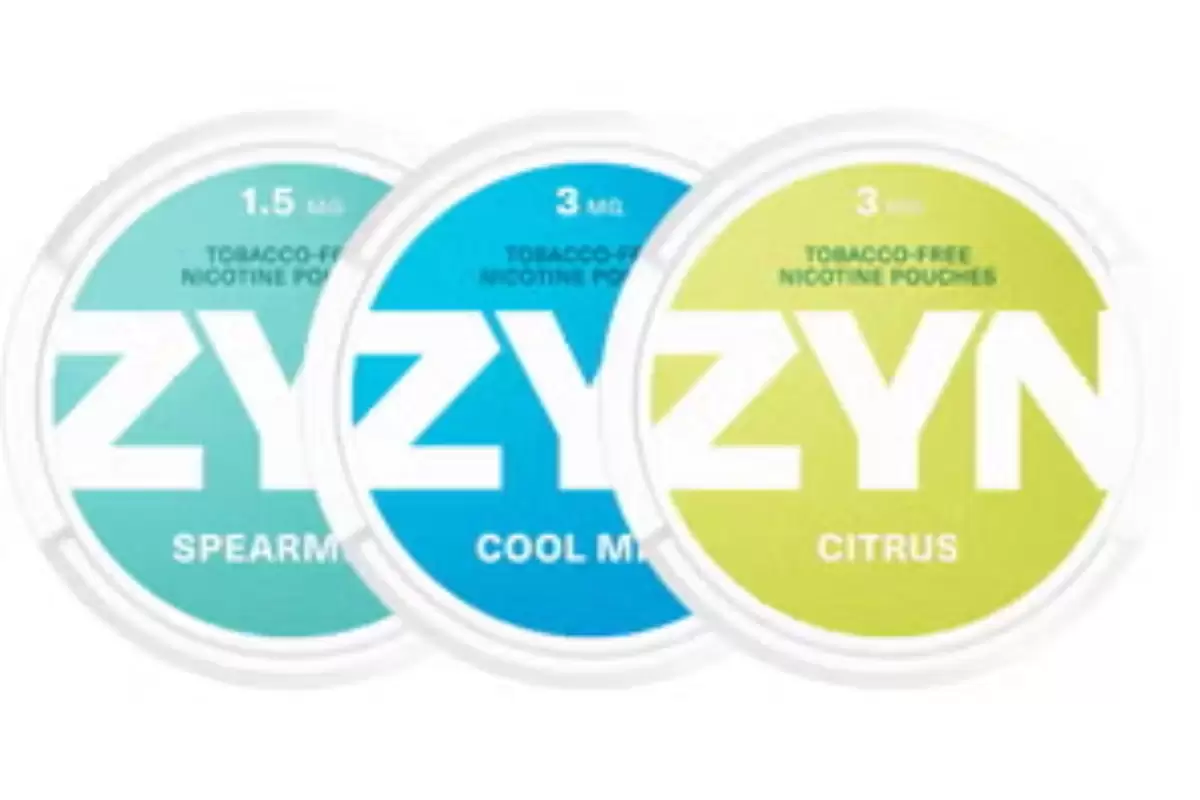Introduction to Nicotine Pouches
Nicotine pouches are the latest iteration of nicotine-replacement therapy to explode in popularity as both a smokeless and a cooler alternative to conventional cigarette use. Sliding into the mouth like small tea bags, these pouches contain nicotine without tobacco leaf – a format that has proven most appealing to those who want to avoid smoke and smell.
Dr. Elliot Lee Smith, an addiction specialist at Johns Hopkins University, says: “Nicotine pouches are a potentially healthier form of nicotine than cigarettes as they contain the same nicotine but no tobacco massively reducing the combustion and associated toxic chemicals of tobacco smoke.
Now, in 2024, we dive deeply into the two dominant combatants: Grizzly and Copenhagen. They’ve been the two big names in nicotine pouches and both make bold claims about their respective share. In this article, we’ll compare these two brands and how they make inroads in users’ lives, through their complementary production and variant of nicotine pouches. The articles will compare the two brands’ portfolio – how they market themselves, the flavor and strength variations, the pricing, availability, and the thoughts of the consumer as a whole.
Brand Profiles: Grizzly and Copenhagen
This essay compares how Grizzly and Copenhagen have reached their top positions in the nicotine pouches market through their historical evolution and how their marketing has maneuvered them to their respective places in 2024.
Grizzly, long known for its tobacco products, also offers nicotine pouches as part of a strategic switch driven by global trends showing increased demand for safer ways to use nicotine. One of the original nicotine pouch innovators, Grizzly was introduced in 2015 by the American Snuff Company, a division of Reynolds American Inc. Catering to the demands of former smokers and first-time users, the company has responded by offering robust flavors in different nicotine strengths. And because Grizzly prioritizes the quality of its products and customer satisfaction, its brand is no stranger to the market.
But then again, Copenhagen, a brand that goes all the way back to 1822, is a mainstay in the smokeless-tobacco category and a long-time leader in the smokeless-dip market. Copenhagen is owned by U.S. Smokeless Tobacco Company, a subsidiary of Altria – the US-based tobacco conglomerate. As the industry saw consumer preferences for non-tobacco alternatives, they responded in August 2020. Copenhagen’s nicotine pouches are premium quality, with classic ‘tobacco flavors’. Unlike generations, these pouches are tobacco-free.
By 2024, however, both brands invoke a heritage and reflect the persuasiveness of their products. Grizzly is perceived as innovative and aggressive, and positions itself to the younger market wanting convenience and modernity; while Copenhagen, having also modernized, ends up more with long-term users trusting a brand that has had a long history of delivering on what they promise.
Both, however, despite any official changes to the regulatory environment and renewed awareness about health and wellness among consumers, have found ways to remain intensely competitive as products that attempt to either eliminate or diminish a smaller or larger set of known risks involved in consuming the addictive substance known as nicotine.
Product Range and Features
Their products cater to a variety of tastes, while still being unique from each other: Grizzly vs Copenhagen nicotine pouches offer different flavours, doses, and pouch sizes.
Grizzly nicotine pouches are devilishly daring. The brand offers 23 different flavours, ranging from classic tobacco-like flavours to bolder, more innovative choices including peppermint and coffee, all the way to sweet, fruity flavours such as summer blend, Swedish strawberry, and Arctic blast. And all the nicotine pouches are available in more than one strength, typically ranging between 2 mg to 6 mg of nicotine, which is a key advantage: instead of quitting all at once, they can, for example, step down by buying pouches at the 6 mg level one day, and 2 mg the next.
Copenhagen continues in its classic tradition, aiming for the most traditional of flavour profiles, offering the closest experience to its core tobacco products. This would seem to be a better fit for those old-time users of smokeless tobacco seeking a tobacco-free alternative. Therefore, Copenhagen’s strength categories are similarly stratified, offering the broadest range of differences as well, with an emphasis on the strongest hits, reflective of the brand’s legacy of serving long-time users.
They vary at different grades and styles: Copenhagen offers larger pouch sizes, designed for a somewhat longer-lasting dip experience, while Grizzly makes smaller pouch sizes that fit better under the lip and so are attractive to guys who like their perk to remain invisible.
This brand positioning is also reflected in the design and packaging. Grizzly uses bright modern packaging to address a youthful and hip crowd, while Copenhagen chooses more earthy and traditional designs that will appeal to its established user base.
These product features appeal to different senses in the eyes of consumers looking for different forms of pleasure and engagement, and even different outcomes. Both Grizzly’s and Copenhagen’s products aim at innovation and product-line expansion to stay on top of the changing landscape of nicotine replacement therapies.
User Experience and Consumer Feedback
User experience and consumer feedback are vital to comprehending Gripp’s and Copenhagen’s nicotine pouches as utilized by consumers. Both brands have developed different user groups and consumer habits, each with their own taste and expectations, which inform their experience and opinion of the products.
You don’t see older people using the brand of nicotine pouches that I enjoy, because it’s a much more innovative one among the younger adults. So, the flavours, the design, and all of that make it more modern. All of the online forums and product review sections will talk about ‘Oh my God, when I have it, the nicotine is extremely strong, it blows my head off – there are so many different flavours here that are actually very bold and very satisfying for me’ – that is what usually the biggest portion of the feedback talks about .
Then when we go into the smaller pouches, a lot of people are like: ‘Oh my God, I can actually use the smaller pouch more comfortably, not only because it’s in my mouth but, like, I’m a young person walking among so many people, I feel very insecure that someone will realise what it is and react negativity and judge me’ – all of this is another factor for the nicotine pouch’s success. A small minority of interviewees requested lower nicotine options to help quit nicotine ‘as soon as possible’.
On the other hand, Copenhagen draws in habitual smokers and long-time dips who want to replace their habit without the health risks, as many of the happy reviews praise Copenhagen for its consistency of flavours and chaw-like experience. This robust brand loyalty is indicative of how older demographics skew toward the traditional and the uncomplicated, embracing the straightforward delivery of nicotine. However, not all reviews are positive about the product’s ‘plumper’ pouch, which leads to a wider upper lip and can become too conspicuous at the corner of the mouth if left in for a longer pull.
Both companies are praised for their effectiveness at reducing cravings (the most frequently mentioned important asset of smokeless tobacco) in helping users quit smoking. The other common themes are that both brands function well in delivering nicotine, however the different tastes, pouch comfort, and nicotine strength ultimately lead users to prefer one brand over the other.
Their continued success in adapting to meet and shape consumer preferences through its ongoing product development and marketing strategies can be seen in the fact that Grizzly STILL exists, attempting to further increase user-satisfaction and market share.
Health and Safety Analysis
Therefore, their health and safety functions, especially as smoking-abatement products by smokers looking for safer alternatives to cigarettes, are crucial. Both Grizzly and Copenhagen proclaim on their packages and websites that both products have been evaluated by the Swedish Food and Administration (SPV) to meet regulatory guidelines and have been deemed safer alternatives to smoking for nicotine intake.
Grizzly nicotine pouches have entered the health debate because the tobacco-free formula drastically reduces a user’s exposure to carcinogenic tar, as well as other harmful byproducts that result from the burning of tobacco. Doctors who recommend smokers make the switch to nicotine pouches include Dr. Michael Johnson from the University of California, San Francisco, who tells me: ‘So, almost by definition, the farm-raised nicotine pouches (tobacco-free) Grizzly offers may dramatically reduce the harm from tobacco because you’ll avoid combustion and inhaling all of the toxic stuff.’ But nicotine is addictive, and it’s far from risk-free in its own right; users can become addicted to the nicotine in pouches just as they can with combustible tobacco.
Since Copenhagen started (with Snus) in the tobacco products business, they have been a frontrunner in continual product improvement to reduce health risks, since that is one of the key benefits of nicotine pouches that are not smoked but instead dissolved in the mouth. Yes, there is still variability associated with how people use these products, which is why health professionals have recommended trying to quit all nicotine uses even if it is a safer product like Copenhagen’s nicotine pouches.
Both manufacturers comply with the newest standards on nicotine content and packaging – for example, products are packaged with a child-proof container and clear labels. These are vital controls to prevent children from any unintentional old-fashioned nicotine ingestion as well as to inform adult consumers of real nicotine risks.
In addition to the relative risk of using nicotine pouches, new studies have also considered the relative safety of using nicotine pouches compared with other forms of nicotine delivery. These studies tend to indicate that nicotine pouches might be less risky than smoking, although proponents of smoking cessation argue that more research is required to better understand the effects of using nicotine pouches over a longer period.
In conclusion, while Grizzly and Copenhagen nicotine pouches appear safer than the traditional cigarette, the risk for health is greater when using tobacco products in the long run. Therefore, it is crucial that both healthcare professionals and end-users are informed about any potential risks linked to chronic nicotine consumption. Since these products represent a part of harm reduction in tobacco control, further research and regulatory monitoring will be indispensable in the years to come.
Pricing and Availability
The ways in which the brand Grizzly and Copenhagen nicotine pouches are priced and made available to consumers are important factors that help dictate the categorization of consumers, and can help foster loyalty to a brand by segmenting certain niches in the market in different ways. In turn, brands like Grizzly and Copenhagen tailor their pricing structures and supply chains to appeal to specific target audiences and position their products in specific ways.
Grizzly is one of the most cost-effective brands on the nicotine pouches market. The brand generally pursues an affordable price point that slightly undercuts premium brands. Grizzly’s more accessible price point also helps appeal to younger consumers or those with more budget constraints. Grizzly’s products are easily accessible on numerous retail platforms, stretched across convenience stores, supermarkets, online marketplaces, and other third-party retail outlets. This wide availability and attractive price point work together to make the brand accessible to a broad consumer base. This combined strategy helps Grizzly maintain a dominant presence in the market and introduce new users to the world of nicotine pouches.
Alternatively, some brands, like Copenhagen, sell their nicotine pouches at a premium price. This is consistent with a marketing decision to position Copenhagen as a provider of premium quality, traditional pouched tobacco products that continue the brand’s decades-long history. That is, Copenhagen is seen by brand stewards as a heritage brand that carries unique value in the eyes of its long-term customer base, and hence deserves a premium price as compared with other brands.
Copenhagen’s pouches are mostly sold in bricks-and-mortar retail and online shops that specialize in provisioning to long-term tobacco consumers. This selective distribution helps to maintain the brand’s image of exclusiveness and facilitates the marketing of products ‘directly’ to its targeted customer base.
Both companies’ pricing and availability strategies are strongly shaped by the regulatory regime in a given marketplace, determining the available ways that nicotine products can be sold and to whom. For a brand to operate under regulatory scrutiny imposes compliance – that is, it constrains the ways in which a brand can compete in various regional markets.
Pricing changes and availability are important factors to consider as the two brands Grizzly and Copenhagen adapt to how consumers behave in a competitive nicotine replacement products market in the exclusion of tobacco. This was a fascinating case where data helped us explore our own role as researchers by asking: which companies are marketing to which consumers? And how are different brands adjusting their tactics and strategies within a changing regulatory environment for their product? These are the questions that drove industry leaders and companies to take action.
Marketing Strategies and Brand Loyalty
The marketing strategies of Grizzly and Copenhagen serve an important purpose in allowing these brands to build their identities and attract loyal customers; it’s how they engage with customers, what they speak about, and the approach they take to communicate their products and their ethos is instrumental in delivering such. Each brand utilizes contrasting strategies to maximize its reach and influence audiences on both traditional and digital platforms.
Grizzly’s ‘agile’ marketing strategy relies on digital channels to target a younger audience. Social-media posts, influencer partnerships, and banner ads are all part of the campaign that aims to target millennial and Gen Z consumers. The brand’s marketing often emphasizes flavors and variable nicotine strengths, which align with the lifestyle and preferences of younger consumers who value personalization. Grizzly’s promotional materials promise a customized experience. In addition to improving brand awareness, this marketing strategy provides opportunities for promoting happenings such as sweepstakes or giveaways, both of which generate social-media participation and build a sense of community among those using the product.
Copenhagen relies on more traditional marketing strategies such as newspaper ads, sponsored rodeos and events, and endorsements by outdoor sports figures and rodeo athletes. These are supported by health-focused ads that frame the nicotine pouches as a more dignified and less dangerous alternative than smoking. Copenhagen uses its long lineage to build trust and loyalty among its users by positioning the brand as dependable due to its heritage.
Both also emphasize efforts to promote customer retention. Grizzly offers customers access to various loyalty programs as well as through mobile app integrations that provide discounts to clients and enable two-way communications between the company and the customers. These develop customer relationships and encourage repeat purchases. Copenhagen relies primarily on customer loyalty programs to generate these benefits. Copenhagen focuses more on client relations and retention through exclusive offers, such as discounts, early access to new products, and limited-edition items.
The effectiveness of these marketing tactics can be seen in the fact that these two brands maintain large market shares and maintain die-hard followings. If they did not market themselves in a way that fit the values and tastes of their core consumers, it is doubtful that they would continue to be of these sizes or continue to grow. Grizzly and Copenhagen are but two examples of the ways that brands in the public-health-mutant world adapt to the advent of technological and pharmaceutical smoking substitutes.
Overall, although the new marketing techniques adopted by Grizzly are meant to lure a new, younger, and more digitally experienced customer segment towards the brand, Copenhagen still seems to rely on a visual language that is more familiar and fitting to the inherited legacy of a brand that aligns closer with the traditional consumer than its competitors. Hence, the marketing strategies of each brand reflect the companies’ understanding of customers and why they buy cigars. However, there might also be an explanation in the fact that both brands endorse both strategies in parallel, not as a barometer of their marketing skills but in order to keep them in check with ongoing market and technological developments.
Common Questions About Nicotine Pouches
- What is a nicotine pouch? Nicotine pouches are small bags containing a white powder that is a mixture of nicotine, carbohydrate (cellulose), flavourings, sweeteners, and other ingredients. They are used by placing the bag between the lip and gum, and the nicotine is absorbed from the bag through the mucous membranes.
- How do nicotine pouches work? When placed between the lip and gum, nicotine is released and absorbed gradually into the bloodstream. This way, the user experiences a nicotine hit, which may prevent a cigarette craving, as well as vaping.
- Are nicotine pouches safe? Using nicotine pouches is preferable to smoking because the products are tobacco-free and don’t contain the combustion products of smoking, such as tar or carbon monoxide. But, because they contain the addictive chemical nicotine, health experts say it’s preferable to use them as part of a structured quit-smoking regimen rather than as a long-term substitute for smoking.
- Could nicotine pouches help you quit smoking? Yes. Nicotine pouches are effective for helping people quit smoking due to their ability for harm reduction; they manage withdrawal symptoms and cravings, but they must be used in combination with a comprehensive quit plan, preferably under the guidance of a healthcare provider.
- How long should I wear the nicotine pouch to achieve its best effectiveness and release? The time can vary with different brands and your taste. Usually, You can keep the nicotine pouch in your mouth for 60 minutes. The nicotine is constantly released during this period, with the best effect.
- Are they sold in different strengths? Yes, they are available in a wide range of different strengths, typically in the range of 2 mg, 4 mg, 6 mg, and 8 mg of nicotine per pouch, which enables users to select a strength that more appropriately matches their current level of nicotine dependence.
- What are the side effects of nicotine pouches? Irritation of the mouth or throat is most common, followed by instances of hiccups, upset stomach, and increased salivation. Long-term side effects are still being studied but all known risks are much lower than for traditional tobacco products.
- Nicotine pouches: can you smoke them anywhere? That is one of the great advantages of the pouches: users can enjoy their nicotine without a cigarette, without smoke or smell, and without having to go outside. Where you can’t smoke or vape, you can use nicotine pouches.
- What do you do with an empty pouch? After use, you can put the used pouch back into the disposal compartment often provided in packs, or dispose it in a bin. Please do not litter because they are harmful to the environment.
- Are nicotine pouches addictive? Yes. In a pouch, the nicotine comes from Swedish snus, a tobacco product.
Here are five scholarly articles on nicotine pouches that include detailed examinations of their use, public health impacts, and consumer awareness:
- “Nicotine Pouch Awareness and Use Among Youth” explores the growing awareness and usage of nicotine pouches among young people, particularly focusing on flavor preferences and perceived risks.
- “Awareness, susceptibility, and use of oral nicotine pouches and comparative risk perceptions with smokeless tobacco among young adults in the United States” provides insights into how young adults perceive nicotine pouches compared to traditional smokeless tobacco products.
- “Perceptions of oral nicotine pouches & their marketing among Ohio Appalachia smokers and smokeless tobacco users” examines how users from specific regions view nicotine pouches and their marketing.
- “Nicotine Pouch: Awareness, Beliefs, Use, and Susceptibility among Current Tobacco Users in the United States, 2021” surveys current tobacco users on their awareness and usage of nicotine pouches, offering valuable demographic insights.
- “Characterization of Total and Unprotonated (Free) Nicotine Content of Nicotine Pouches” analyzes the chemical composition of nicotine pouches, providing critical information on nicotine content and its implications for health and addiction.













